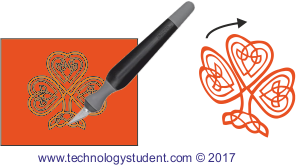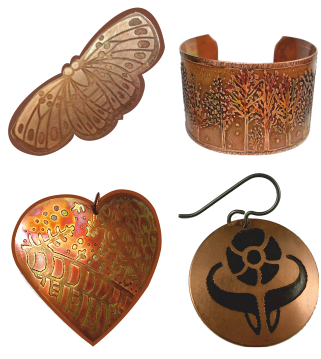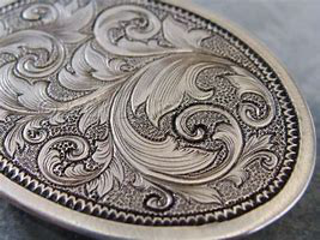Traditionally, ‘etching’ is a process, whereby acid is used to slowly remove the unprotected surface of a metal such as copper.
A pattern is produced by applying a ‘resist’ substance to the surface of the copper. The resist can be beeswax or shellac. A sharp tool such as a scriber, is used to ‘scratch’ a pattern into the resist, removing it where acid is to ‘eat into’ the surface.
When the drawing / ‘scratching’ is complete, the copper is placed in a suitable acid, in a glass container. The acid slowly dissolves the surface of the exposed copper, producing the pattern. This can take hours.
TANK AND A VINYL CUTTER
A shape can be cut out of ‘sticky back’ vinyl, with a vinyl cutter and then ‘stuck’ to a piece of copper.
The copper is then immersed in a PCB etching tank, in a mixture of clear etchant.
The area covered with the vinyl is protected from the etchant, whilst at the same time the unprotected surface is etched.


